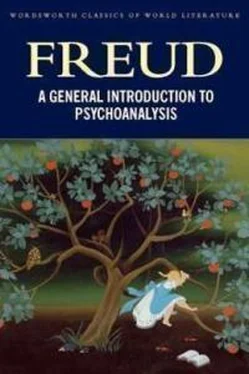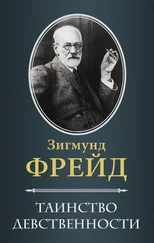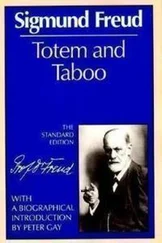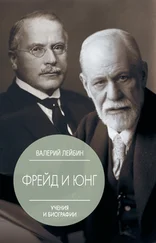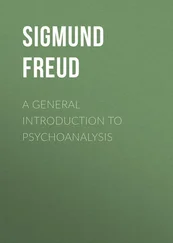Our observations on anxiety neuroses led to the conclusion that when the libido was diverted from its normal use and anxiety thus released, it occurred on the basis of somatic processes. The analyses of hysteria and compulsion neuroses furnish the correlative observations that similar diversion with similar results may also be the consequence of a constraint of psychic forces. Such then is our knowledge of the origin of neurotic fear; it still sounds rather vague. But as yet I know no path that would lead us further. The second task we have set ourselves is still more difficult to accomplish. It is the establishment of a connection between neurotic fear, which is misused libido, and real fear, which is a reaction to danger. You may believe that these things are quite distinct and yet we have no criterion for distinguishing the sensations of real and neurotic fear.
The desired connection is brought about by presupposing the antithesis of the ego to libido that is so frequently claimed. We know that the development of fear is the ego's reaction to danger, the signal for preparation for flight, and from this we are led to believe that in neurotic fear the ego attempts to escape the claims of its libido, and treats this inner danger as though it came from without. Accordingly our expectation that where there is fear there must be something to be afraid of, is fulfilled. But the analogy admits of further application. Just as the attempt to flee external danger is relieved by standing one's ground, and by appropriate steps toward defense, so the development of neurotic fear is arrested as fast as the symptom develops, for by means of it the fear is held in check.
Our difficulties in understanding now lie elsewhere. The fear, which represents flight of the ego before the libido, is supposed to have sprung from the libido itself. That is obscure and warns us not to forget that the libido of a person belongs fundamentally to him and cannot confront him as an external force. The localized dynamics of fear development are still unintelligible; we do not know what psychic energies are released or from what psychic systems they are derived. I cannot promise to solve this problem, but we still have two trails to follow which lead us to direct observations and analytic investigation which can aid our speculations. We turn to the origin of fear in the child, and to the source of neurotic fear which attaches itself to phobias.
Fear in children is quite common and it is very hard to tell whether it is neurotic or real fear. Indeed, the value of this distinction is rendered questionable by the behavior of children. On the one hand we are not surprised that the child fears all strange persons, new situations and objects, and we explain this reaction very easily by his weakness and ignorance. We ascribe to the child a strong disposition to real fear and would consider it purposeful if this fear were in fact a heritage. Herein the child would only repeat the behavior of prehistoric man and of the primitive man of today who, on account of his ignorance and helplessness, fears everything that is new, and much that is familiar, all of which can no longer inspire us with fear. If the phobias of the child were at least partially such as might be attributed to that primeval period of human development, this would tally entirely with our expectations.
On the other hand, we cannot overlook the fact that not all children are equally afraid, and that those very children who express particular timidity toward all possible objects and situations subsequently prove to be nervous. Thus the neurotic disposition reveals itself by a decided tendency to real fear; anxiety rather than nervousness appears to be primary. We therefore arrive at the conclusion that the child (and later the adult) fears the power of his libido because he is anxious in the face of everything. The derivation of anxiety from the libido is hence put aside. Any investigation of the conditions of real fear consistently leads to the conclusion that consciousness of one's own weakness and helplessness—inferiority, in the terminology of A. Adler—when it is able to persist from childhood to maturity, is the cause underlying the neuroses.
This sounds so simple and convincing that it has a claim upon our attention. To be sure, it would result in our shifting the basis of nervousness. The persistence of the feeling of inferiority, and its prerequisite condition of anxiety and its subsequent development of symptoms, is so firmly established that it is rather the exceptional case, when health is the outcome, which requires an explanation. What can be learned from careful observation of the fear of children? The little child is primarily afraid of strange people; situations wax important only because they involve people, and objects become influential much later. But the child does not fear these strange persons because he attributes evil intentions to them, because he compares his weakness with their strength or recognizes them as dangerous to his existence, his safety and freedom from pain. Such a child, suspicious, afraid of the aggressive impulse which dominates the world, would prove a sad theoretic construction. The child is afraid of a stranger because he is adjusted to a dear, beloved person, his mother. His disappointment and longing are transformed into fear, his unemployed libido, which cannot yet be held suspended, is diverted by fear. It cannot be termed a coincidence that this situation, which is a typical example of all childish fear, is a repetition of the first condition of fear during birth, viz., separation from the mother.
The first situation phobias of children are darkness and solitude; the former often persists throughout life; common to both is the absence of the dear nurse, the mother. I once heard a child, who was afraid of the dark, call into an adjoining room, "Auntie, talk to me, I am afraid." "But what good will that do you? You cannot see me!" Whereupon the child answered, "If someone speaks, it is brighter." The yearning felt in darkness is converted into the fear of darkness. Far from saying that neurotic fear is only a secondary, a special case of real fear, we observe in little children something that resembles the behavior of real fear and has in common with neurotic fear, this characteristic feature: origin from unemployed libido. The child seems to bring very little real fear into the world. In all situations which may later become the conditions of phobias, on elevations, narrow bridges across water, on railroad and boat trips, the child exhibits no fear. And the more ignorant he is, the less fear he feels. It would be most desirable to have a greater heritage of such life–preservative instincts; the task of supervision, which is to hinder him from exposing himself to one danger after another, would be lessened. In reality the child at first overestimates his powers and behaves fearlessly because he does not recognize dangers. He will run to the water's edge, mount the window sill, play with fire or with sharp utensils, in short, he will do everything that would harm him and alarm his guardians. The awakening of real fear is the result of education, since we may not permit him to pass through the instructive experience himself.
If there are children who meet this education to fear half way, and who discover dangers of which they have not been warned, the explanation suffices that their constitution contains a greater measure of libidinous need or that they have been spoiled early through libidinous gratification. No wonder that those persons who are nervous in later life are recruited from the ranks of these children. We know that the creation of neurosis is made easy by the inability to endure a considerable amount of pent–up libido for any length of time. You see that here too we must do justice to the constitutional factor, whose rights we never wish to question. We fight shy of it only when others neglect all other claims for this, and introduce the constitutional factor where it does not belong according to the combined results of observation and analysis, or where it must be the last consideration.
Читать дальше
